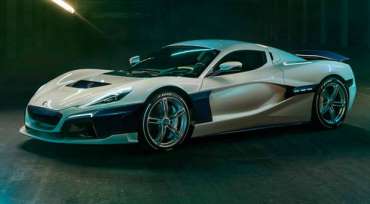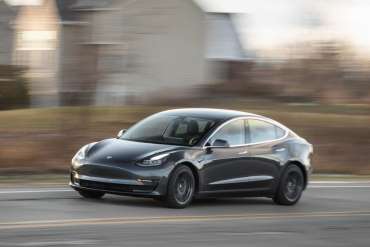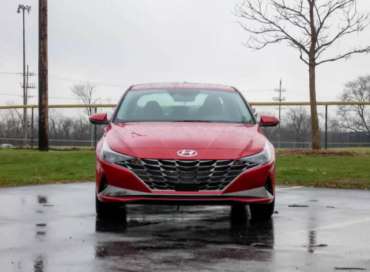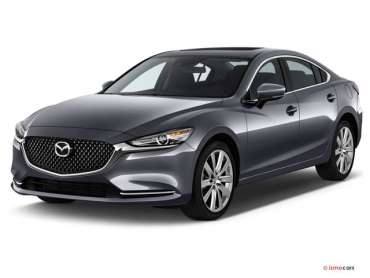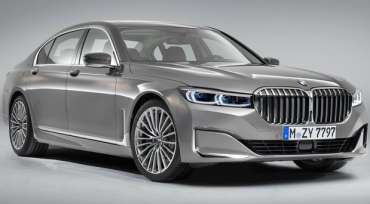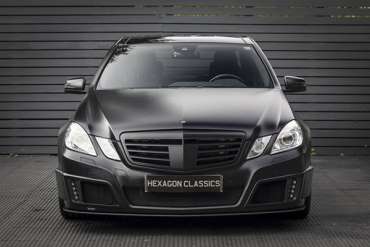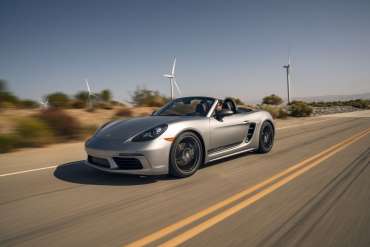
Worldcarblog.com
Rimac C_Two will soon start mass production
Rimac Automobili announces that it will soon begin mass production of their C_Two model. The pessary phase of production began in December.
"I walk here and see how after 10 years of blood, sweat and tears, all this is coming together - what a feeling. Pre-series production is growing and we are preparing to produce cars for customers. Hats off to the people who made this happen. All their signatures will be on to every customer's car - both figuratively and literally, "Rimac wrote on Facebook.
"We are looking to the future. We started production of pre-production vehicles in December, and now we are progressing towards serial production of C_Two. Pre-production cars will be used for further minor adjustments, homologation and durability tests, trim experimentation, NVH adjustment and global rating We have an important year ahead of us. We appreciate your support at every step, "Rimac Automobil announced at the beginning of the year.
Mate Rimac himself wrote on Facebook that, if everything goes according to plan, he will produce numerous cars in this line in 2021.
Assembling each C_Two car will take approximately five weeks, halving production time compared to the principle of static off-line production, used by some other supercar manufacturers. The new process will enable the construction of four final production vehicles per month at full capacity.
However, in Rimac, the production process begins much earlier before assembling the finished components on the line, since a large number of components and systems are produced in the factory in Sveta Nedelja and Veliki Trgovišće, after which it is delivered to the vehicle assembly line.
The complete homologation procedure without any shortcuts, from the first concepts, through complete prototypes to cars on the road, is a three-year process. With the introduction of the new production line, Rimac Automobili will deliver the first cars to customers in 2021, unlike the original plan before the covid-19 crisis, which foresaw deliveries in 2020. The final design and name of the car will be revealed this year.
Our 2019 Tesla Model 3 Has Logged 19K Nearly Trouble-Free Miles
But we're still waiting for Tesla's Full Self-Driving feature to materialize.
20,000-Mile Update
With more than a year and 24,000 miles logged with our Tesla Model 3, we're way past the honeymoon phase. Our initial 12 months of included premium connectivity has expired, which means in-car audio and video streaming now only works with a Wi-Fi connection. And since not one of our area Superchargers has it, we are no longer whiling away the time spent charging our car by streaming Netflix.
Our maintenance costs thus far have totaled $313, which is on par with the cost for many gas-powered vehicles. That includes two rather steep charges from Tesla's in-house service network: $103 for a tire rotation and $210 for an unusual service to lubricate our car's brake calipers, which is called for annually on cars that reside in a state like ours that uses salt to rid the roads of ice during winter months. That service is to prevent the brakes from seizing, as they don't get much use when regenerative braking from the electric motors is employed more often to slow the car than the conventional friction brakes. Also unusual, though not expensive, is that the key fob has already burned through a battery. We also spent $1088 to replace a cracked windshield, but that was our fault.
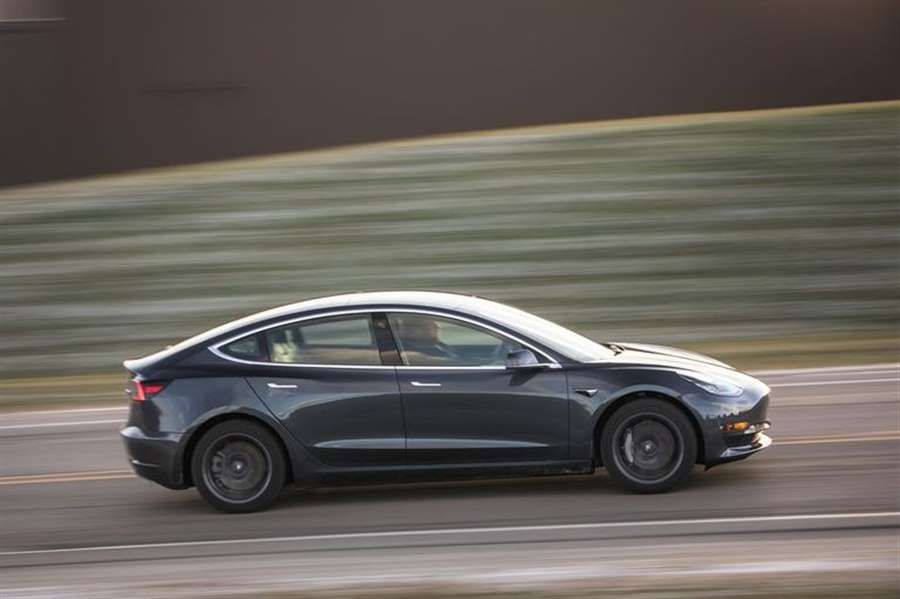
What never gets old, however, is plugging in while out running errands and getting fuel for free. Even 14 months in, that perk still feels novel. We haven't had any other significant issues with our car since the replacement of the rear motor assembly that happened a year ago. The trim on the driver's side B-pillar—the piece you tend to bump getting in and out of the seat—came loose and was fixed under warranty. We noted squeaks and rattles that materialized early on, but those don't seem to have worsened with the additional time and miles.
The spring and summer months substantially improved the Model 3's energy consumption. In the most efficient month, June, we averaged 267 watt-hours per mile (Wh/mile), while in December—with winter tires installed and the average temperature plummeting to 34 degrees compared with June's 81—it increased to 354 Wh/mile. That equates to a 60-mile swing (or 20 percent) in expected range, depending largely on the outside temperature. And that's if it's plugged in overnight. Otherwise, the Model 3 can easily shed an additional 10 or 20 miles of range. Our overall average consumption is 316 Wh/mile, and our average efficiency—unlike consumption, which includes charging losses—has bumped up by 10 MPGe to 84 MPGe.
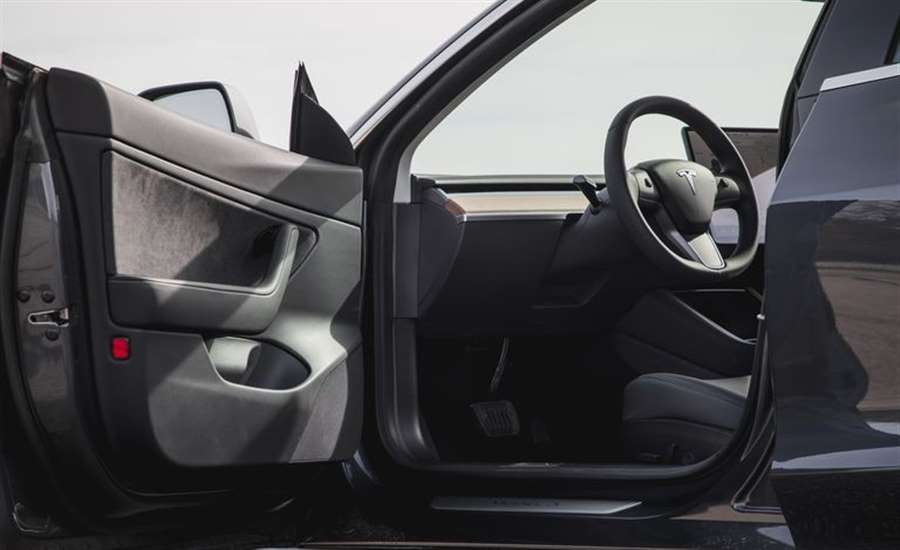
At the current national average residential electricity rate of 13.6 cents per kWh, it's costing us 5.5 cents per mile to power our Model 3. If we instead relied entirely on Tesla's Supercharger network, the cost would nearly double, to 10.4 cents/mile, almost matching the price of keeping our long-term BMW M340i filled with 93-octane premium (10.7 cents/mile). That may be an extreme example, but it proves the point that having a high-voltage charger at home or at your office is critical if you want to reap the potential financial benefits of going electric.
Although our Model 3 was dispatched to our annual Lightning Lap event at Virginia International Raceway, completing each 635-mile leg of that trip from Ann Arbor and back with three stops to charge, we have still yet to beat our previous best of 221 miles between plugging in. That's partially because, according to the TeslaFi tracking tool we're using, our battery has lost 7 percent of its capacity, or 22 miles, since it was new.
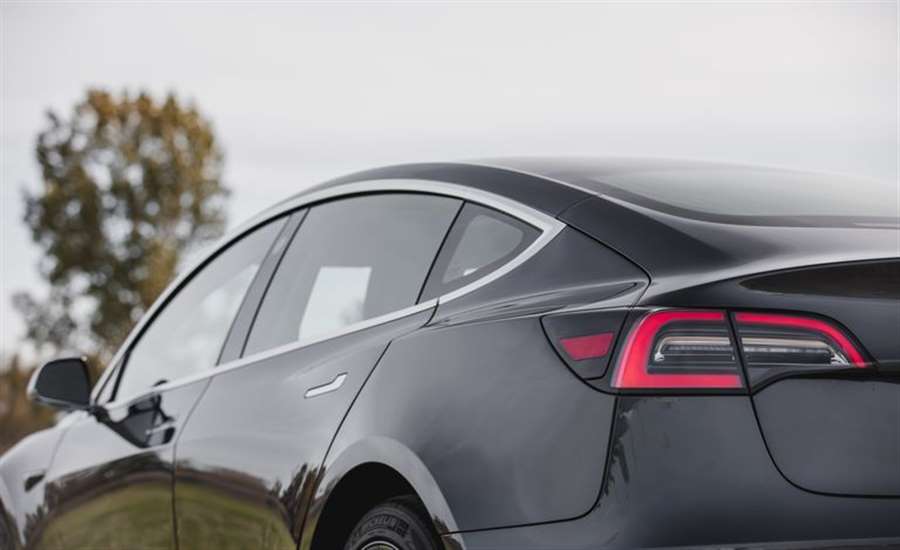
We're still smitten with the Model 3's swiftness. And we're intermittently impressed and befuddled by the varying experiences of its Autopilot feature. Sometimes it seems that fully autonomous driving is nearly upon us. At other times the system bobbles a seemingly straightforward maneuver so badly that we think the promised Full Self-Driving (FSD) capability that we paid for more than a year ago—and are still waiting to materialize—is much further off than Tesla would have the world believe.
Instead of meeting its self-imposed 2020 deadline to release FSD, Tesla deployed a new feature at the tail end of last year, called Boombox, with which we can now assault the outside world with music or various noises—including, naturally, a whoopee cushion—using the car's external speaker. That update also rejiggered the layout of the central touchscreen, giving more real estate to the area that depicts the car's surroundings, which will likely become more important when hands are no longer on the wheel. Both of these are changes that we haven't seen in any other car, proving yet again that the Tesla experience is definitely not car-making as usual, for better and for worse.
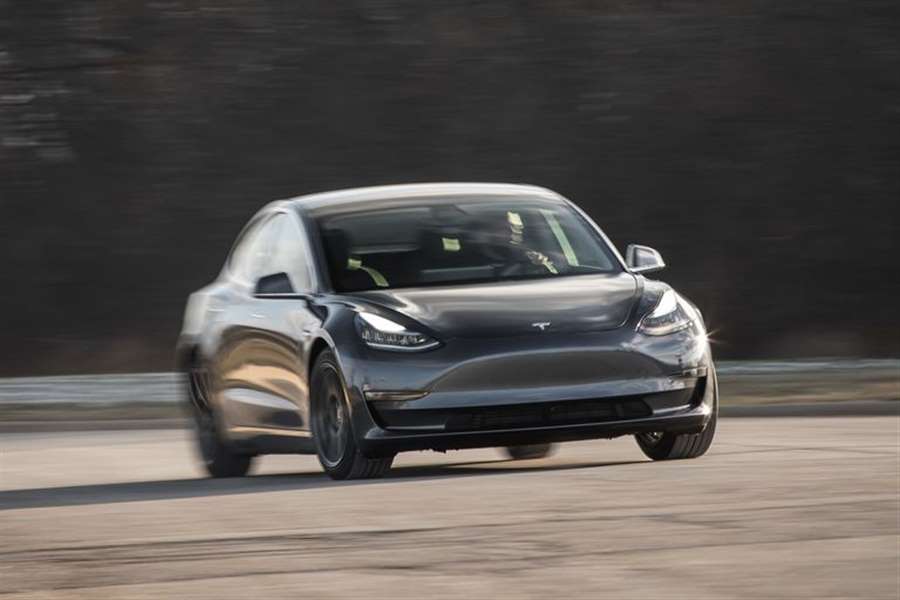
10,000-Mile Update
The updates on many of our long-term cars, particularly the trouble-free ones, tend to be as much about us as about the vehicles. In the absence of reliability or service drama, the focus instead becomes the places we visit, plus whatever new annoyances we find over the course of 40,000 miles.
But the Tesla ownership experience is as different as the driving experience. A Tesla actually changes over time with the company's steady stream of software updates. In the six months and 10,000 miles since we've taken delivery of our Model 3 Long Range, there have been 12 software updates, or an average of one every 16 days. Not all of them are substantial, however; many are small, follow-on updates to fix issues after a major update is released.
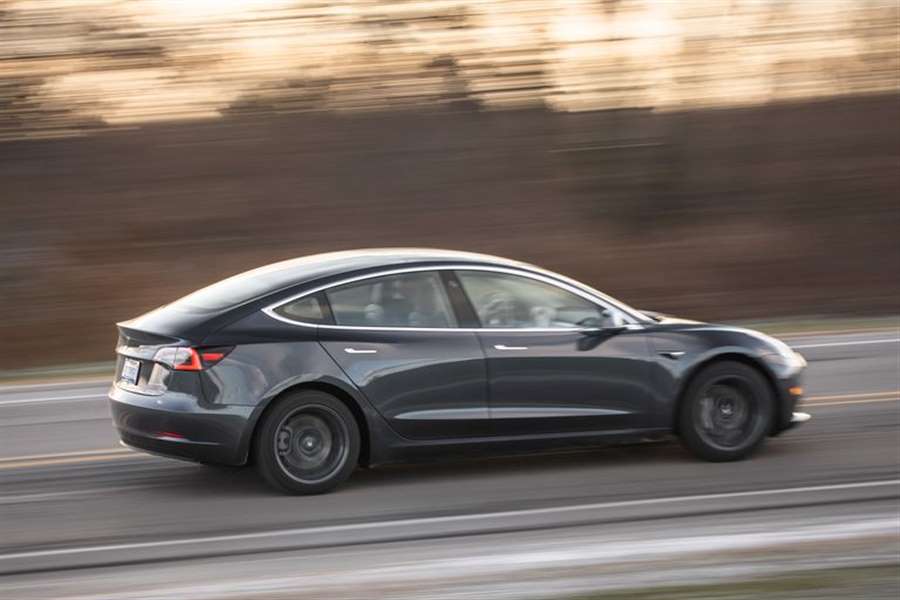
We already mentioned that the update to version 10, a major one, was ready when our car first arrived, and it added Smart Summon and Theater mode, which allows streaming of Netflix, YouTube, and Hulu. It's a great way to pass the time while charging. Since then, we've seen a flurry of changes, such as the addition of true one-pedal driving. (Before the update, the car would slow to about 3 mph but wouldn't come to a complete stop.) There's also Dog mode for maintaining a comfortable cabin temperature while us humans are running errands (and displaying a large message to assuage any window-smashing would-be do-gooders passing by). Dashcam and Sentry mode security features also have been added. Sentry mode stores clips from the array of exterior cameras, either at the driver's behest or when the car detects motion while parked. Just this week, Tesla righted a wrong by adding the ability to view that footage on the car's center screen.
Although the Model 3's acceleration—and particularly its responsiveness—was already garnering universal praise by our staff, one of the updates included a claimed five-percent power bump, which improved our car's performance across the board, including a 0.1-second improvement of its zero-to-60-mph time to 4.0 seconds.
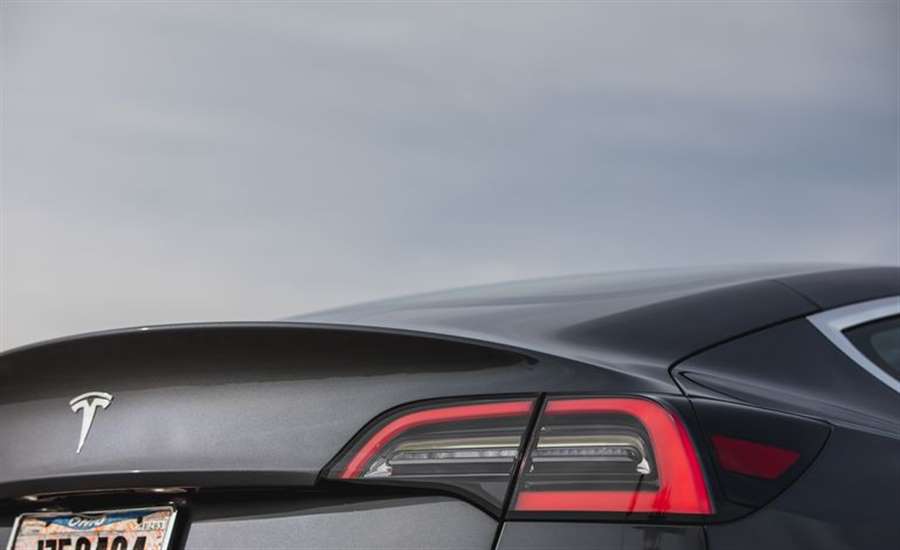
Then, on Christmas Day, disaster struck. While parked in a driveway, a short in the rear power inverter triggered a pyrotechnic fuse, which prevented an even worse outcome. Following a tow-truck ride to the closest service center about an hour away, the entire rear-motor assembly was replaced. We received plenty of emails and DMs from other Model 3 owners sharing similar stories of getting stranded at the hands of a Model 3. But we've had zero reliability issues since, related either to this event or anything else.
How Much Does Climate Control Affect EV Range?
Complaints about the automatic wipers have continued despite an update meant to improve them. Given the poor performance we've experienced, we question Tesla's choice to rely on the front cameras to control their operation rather than a rain sensor like every other automaker employs. Print director Eric Tingwall elaborates: "The wipers often lay dormant as the windshield becomes nearly opaque with spray from surrounding traffic. Then you wake them up by tapping the stalk for a single wipe, and they unnecessarily run at full speed for several minutes." Many also have commented on the difficulty in locating the wiper settings in the center screen.
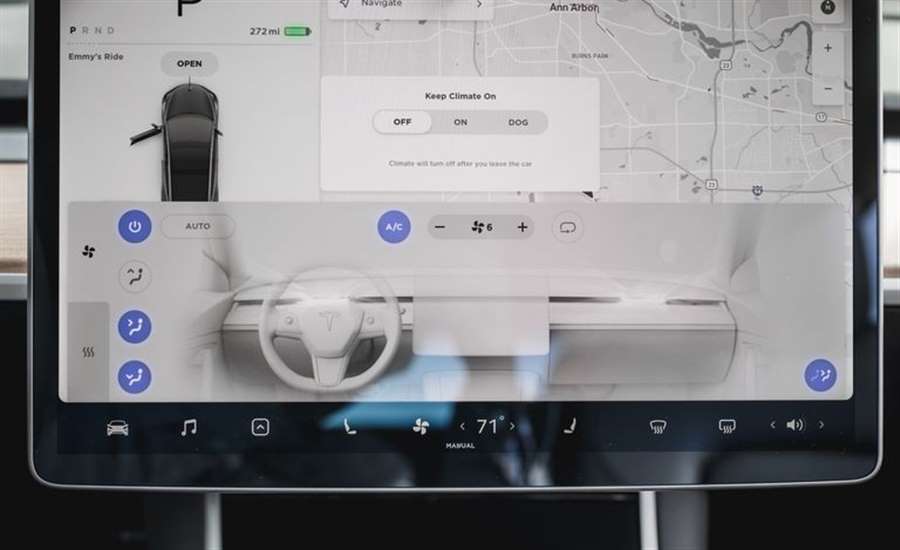
This brings us the most regular logbook refrain: the Model 3's near complete reliance on the center screen to control its various features and functions. "I now know how my grandma felt when we got her an iPad," said staff editor Connor Hoffman after driving our Model 3. "Every time I get in it, I find something new." Road-test editor Becca Hackett admitted to tinkering with the center screen for an hour in her garage as she tried to acclimate herself to the setup when she drove the car home for the first time. And staff editor Colin Beresford asks an existential question: "If a member of Gen Z can't find a feature on the screen, does it even exist?" Some of the few physical buttons that do remain are in odd locations, too, such as the hazard button up on the headliner. Other regular comments include the disconcertingly loud clunking noises that happen while plugged in at one of Tesla's fast-charging Superchargers. Although this doesn't happen in the Model S, it seems to be normal for the 3.
We've also done some experiments of our own. We discovered that the Model 3's plastic wheel covers improve range by up to 10 miles. And although the near-instant warm air blowing from the Tesla's HVAC system is welcome on a cold morning, we found that cranking up the climate control alone can reduce range by 60 miles. We also recently compared the charging speeds on one of Tesla's new 250-kW V3 Superchargers versus the older 150-kW units.
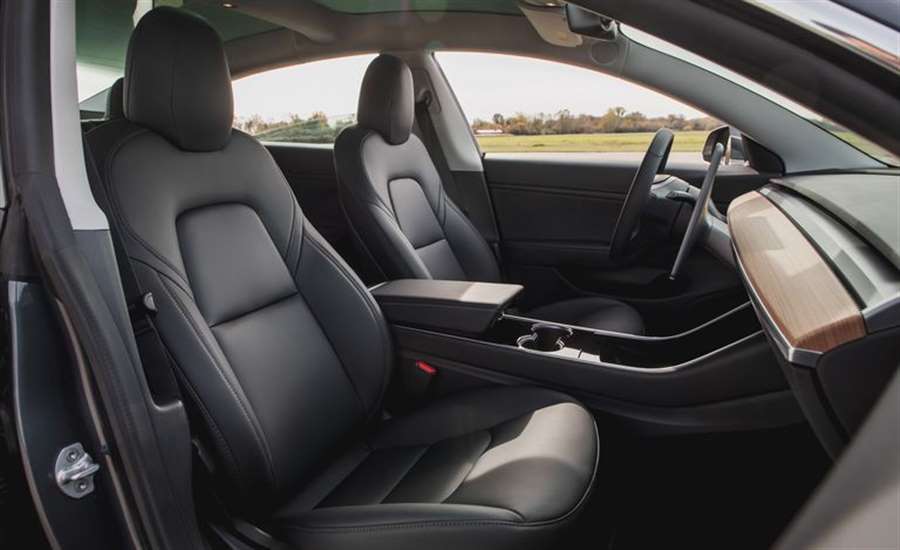
We're still waiting for substantial updates to the full self-driving option that added $6000 to the purchase price. Although Tesla has added more features to the visualization that appears on the left side of the screen while driving—including displaying traffic lights and construction cones—we're waiting for a real improvement in Autopilot's capability that Tesla has been teasing of late.
Not making it easy to keep up with the frequent updates is the fact that Tesla requires a Wi-Fi connection to download software and won't do so through the built-in data connection. Plus, the Model 3 only connects to simple Wi-Fi sources like the typical home router with a network name and password. Anything more complex, such as a network that requires a username and password, or if you need to open a browser window to agree to legal boilerplate, won't work.
So, where have we driven our Model 3? Not very far. We've mostly stayed in our home state of Michigan as we've soldiered through winter. Its logbook is full of anxiety-ridden comments about near misses on range, which we've been chewing through at a rate that's roughly 50 percent higher than predicted. Our farthest drive thus far was a 221-mile run from our office to northern Michigan. Longer road trips with multiple stops—such as Hoffman's recent 520-mile drive to St. Louis—generally don't allow attempts at range maximization since pit stops have to occur where the Superchargers are. And it's not time efficient to wait to recharge the battery all the way to 100 percent.
But we'll certainly be trying to improve upon that that as the winter tires come off, the temperatures continue to warm, and we're once again free to roam the country.
Months in Fleet: 6 months Current Mileage: 10,626 miles
Average Fuel Economy: 74 MPGe
Battery Capacity: 75.0 kWh Observed Fuel Range: 236 miles
Service: $0 Normal Wear: $0 Repair: $0
Damage and Destruction: $0
One of the most interesting things about the Model 3, and Teslas in general, is just how much it deviates from the norms of autodom. Unlike other automakers, which often wind up creating very similar entries by carefully tracking and matching features and equipment relative to the competition, it's refreshing—and occasionally annoying—how Tesla simply does its own thing.
As we're embarking on a 40,000-mile evaluation of a 2019 Model 3 Long Range, our second long-term Tesla after a 2015 Model S P85D, it's impossible not to notice this electric vehicle's vast differences compared with other compact-luxury sedans that exist at a similar size and price. There's no Apple CarPlay or Android Auto here, although the feature has become nearly ubiquitous among its luxury-sedan peers, nor even a gauge-cluster display in front of the driver. However, there are lots of wowing tricks up the Model 3's sleeve to win over people coming into contact with a Tesla for the first time, such as Emissions Testing mode, with six different fart-noise options, and Dog mode to keep our furry friends comfortable. And its phone-as-key feature works completely seamlessly, unlike more recent attempts by traditional automakers, such as Hyundai, that require awkwardly getting out a phone and holding it to the door handle. Plus, there's the very capable suite of Autopilot driver-assist features, which is now standard and generally works impressively to reduce the amount of steering, braking, and accelerating the driver needs to control.
Quick and Enjoyable
Especially when viewed from the front, we wouldn't call the Model 3 attractive, but the low cowl and large glass area make for an expansive forward view. And that is one of a flurry of positive comments about driving the Model 3; it's extremely quick, with direct steering and even a willingness of our all-wheel-drive model to rotate under power. We're suckers for its instant response and forceful acceleration—at 4.1 seconds to 60 mph, this latest 3 is 0.9 second quicker than the initial Model 3 Long Range we tested, which only had a rear motor, and it's also just 0.3 second off the pace of the swift BMW M340i. What's more, the Tesla's power delivery sets itself apart by its instantaneousness, which is demonstrated by our 5-to-60-mph rolling-start test. The Model 3 nails it in 4.2 seconds, whereas today's highly boosted gas engines often have a significant gap between their standing-start and rolling-start metrics (the difference on the M340i, for example, is 0.9 second).
The Model 3 stacks up less well in other areas against the usual luxury players—BMW 3-series, Audi A4, Mercedes C-class—where its plasticky seat material, fixed and narrow headrests, and ultracheap, cardboard-like cover for the large bin under the trunk floor don't live up to its luxury price point. The Model 3 also isn't as hushed over the road as the traditional players; there's a lot of wind noise at 70 mph, and at 70 decibels, it measures one to two decibels louder at that speed than the segment norms. And that's not including the way it clomps loudly over lateral pavement seams, which is partly a result of its high, 42-psi tire pressures that help manage the Model 3's 4038-pound curb weight (that's 141 pounds heavier than the rear-drive Model 3 we tested in 2018) and boost its range.
Among the oft-discussed issues on early Model 3s were panel gaps and overall build quality, and in that area, this latest car is far better than our earlier example. However, the hood wasn't quite level on our car when it arrived, so we adjusted the hood grommets to make it so. We're already noticing some squeaks and rattles emanating from the instrument panel, particularly in the cold weather that has descended on our Michigan HQ.
Data Tracking
We're using third-party software called TeslaFi to corral a staggering amount of data streaming from our car, including its whereabouts, mileage, charging and charge efficiency, temperatures outside and inside the vehicle, and climate-control usage. In our first two months, we've spent 85.5 hours behind the wheel of our Model 3 over 280 drives and a total of 3867 miles. However, partly due to an average outside temperature of 43 degrees, we've used nearly 50 percent more rated range than miles actually driven. That has led to complaints that the main range readout does not adjust downward when using up the battery at a quicker rate than its EPA rating suggests. However, there is a running average figure based on recent driving, found on the Energy screen. We've also noted that the battery's state of charge can drop by 5 percent or so when the Model 3 sits outside overnight in 40-degree temperatures without being plugged in.
Tesla Smart Summon Feature Is Looking Reckless
The only options on our test car are its $1000 Midnight Silver Metallic paint and the $6000 Full Self-Driving Capability, bringing our total sticker price to $57,690. While the latter feature—currently priced at $7000—promises at some point in the future to actually fulfill its name, for now it enables advanced Autopilot moves such as Smart Summon, where the Model 3 will drive itself to the location of the owner's smartphone in a parking lot, and automatic lane changes around slower traffic on the highway. Our car has the base 18-inch wheels with all-season tires and the aero wheel covers, and we tested just how much slipperier those covers are through the passing air than the better-looking aluminum wheels hiding beneath.
What has become a Tesla trademark is continual upgrades, and in the two short months we've had our car, we've downloaded Version 10 software, which added Smart Summon, and built-in Netflix, YouTube, Hulu, and Spotify streaming. Very recently, we updated to 10.1, which promises a 5 percent bump in horsepower. We'll be headed back to the test track to see how much that improves the already very quick acceleration numbers. No doubt there will be lots to talk about.
Source: caranddriver.com
2021 Hyundai Elantra Review: Almost Great
The redesigned 2021 Hyundai Elantra compact sedan would be excellent rather than good if not for its lackluster cabin materials. If developing a car was a marathon, Hyundai didn’t run the last mile.
Versus the competition: For a mass-market compact sedan, the Elantra combines class-leading drivability with loads of user-friendly technology. Alas, its low-rent interior weighs all that down.
For 2021, the Hyundai Elantra sedan comes in SE, SEL and Limited trim levels, all with a 2.0-liter four-cylinder engine. (The Elantra GT hatchback has been discontinued.) The first-ever Elantra Hybrid, meanwhile, pairs a smaller four-cylinder with electric assist; it comes in SEL and Limited trims. Finally, the Elantra N Line has a turbocharged four-cylinder and the lineup’s only manual transmission. (Note that a higher-performance Elantra, called simply the N, without the “Line,” remains in the works as of this writing.) All other variants have an automatic, which is also available on the N Line. Stack up the whole current group, or compare the 2020 and 2021 Elantra.
We evaluated an SEL over the course of a week and also took brief drives in the Limited Hybrid and a stick-shift N Line.
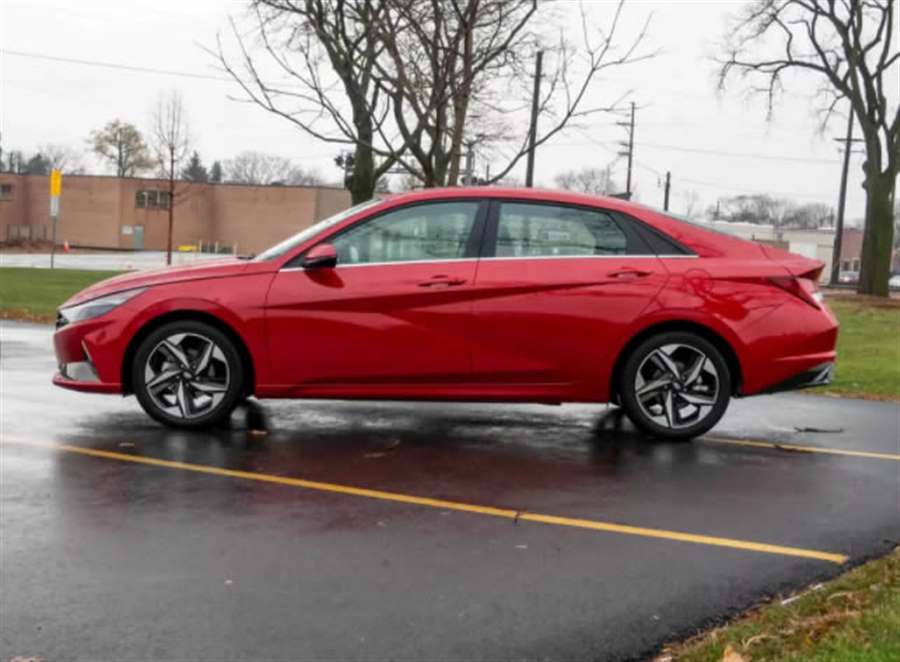
SE, SEL, Limited: Refined Drivability
A confounding but age-old reality in our recent comparison between the Honda Civic, Nissan Sentra and Toyota Corolla sedans was the trade-off between ride quality and handling chops. Hyundai elevates both better than any car in that trio, as well as most other compact sedans.
Despite a torsion-beam rear axle — a cost-saving setup versus the independent rear suspensions used by some rivals, including the Civic and Corolla — the Elantra rides impressively. Aside from some skittishness during mid-corner bumps, body control feels impressive for a mass-market compact sedan. Ditto for shock absorption: The suspension takes sewer covers and rutted pavement with a degree of sophistication reminiscent of a larger, or pricier, car — and that’s with our SEL model’s optional 17-inch wheels and P225/45R17 tires. With available wheel diameters ranging from 15 to 18 inches, it’s possible lesser versions of the Elantra ride even more comfortably. (All other things being equal, larger wheels generally diminish ride quality.)
Kudos, too, for the Elantra’s reflexes. Fling it into a corner and the nose pushes early, but the steering feels as quick-ratio as the Civic’s — still one of the best-handling cars in the class — with less of the outgoing Elantra’s vagueness. The wheel seldom feels twitchy on center even at higher speeds, and body roll is nicely contained through sweeping curves.
Under the hood is last year’s 2.0-liter four-cylinder engine (147 horsepower, 132 pounds-feet of torque), which runs on a more-efficient Atkinson cycle; gone is the prior generation’s Eco trim and its turbocharged 1.4-liter four-cylinder. The 2.0-liter has reasonable power past 3,000 rpm or so, and Hyundai’s continuously variable automatic transmission is a motivated partner to get you there. Revs climb energetically from a stop, and if you need more power while already in motion, the CVT kicks up engine rpm swiftly enough to mimic a downshift from a conventional automatic. The 2021 Elantra is not particularly quick, but it does a nice job with what it has to offer.
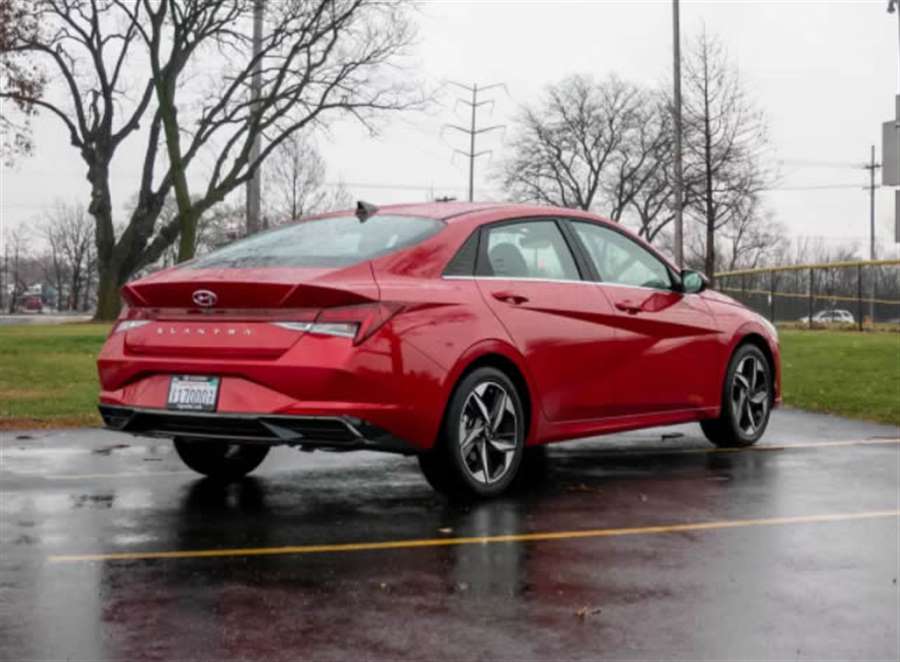
Elantra Hybrid: Even Better
The Elantra Hybrid pairs a 1.6-liter Atkinson four-cylinder with a 32-kilowatt electric motor for a total system output of 139 hp and 195 pounds-feet of torque. It’s a handy combination, particularly on the torque side, to move you out from a stop. Unlike the many hybrids that employ CVT-like power-split devices, Hyundai’s system uses a conventional stepped automatic transmission — in this case a six-speed dual-clutch unit. The stepped gears bring a welcome sensation of upshifts and downshifts, though the downshifts arrive only after a long delay or hard stab on the gas. Sport mode provides much-needed accelerator responsiveness — there’s your downshift — if you don’t mind sacrificing fuel efficiency.
That efficiency is considerable, with 50 mpg in EPA-estimated combined gas mileage (54 mpg in a higher-efficiency Elantra Hybrid Blue edition). That’s up some 40% over the Elantra’s still-impressive EPA 35 mpg combined (37 mpg for the SE trim). Both figures are competitive against respective rivals; compare Elantra Hybrid mileage or the regular Elantra’s.
The Elantra Hybrid gets an independent rear suspension versus the non-hybrid’s torsion beam, but the differences are hard to pick out. I drove the Elantra Hybrid Limited back to back with an Elantra SEL, both with 17-inch wheels, over the same route. Both cars rode similarly well — more of a feat for the SEL’s simpler hardware, perhaps, but we preach results over formula. The results speak for themselves.
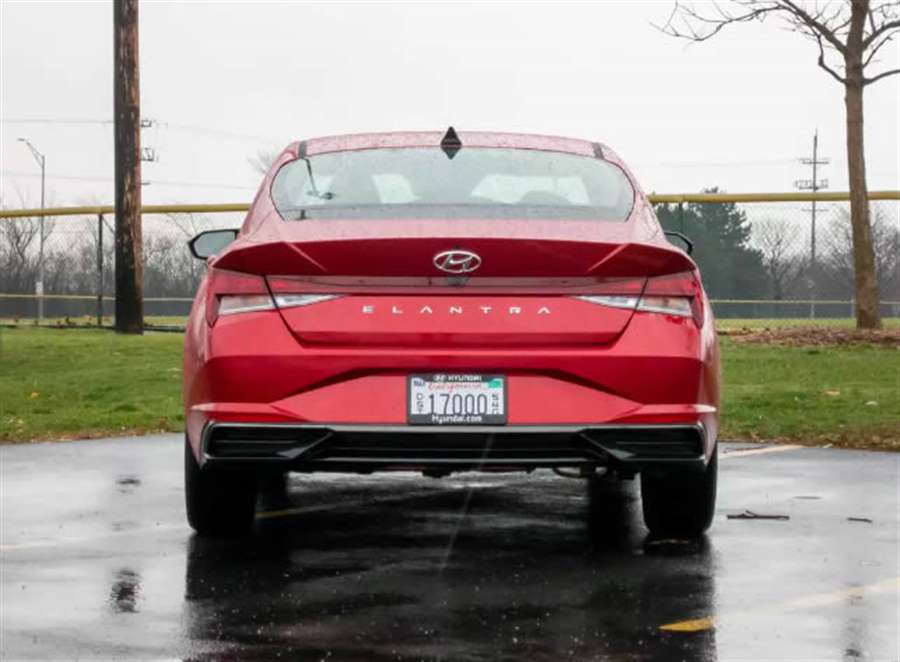
Elantra N Line: A Minor Letdown
If there’s any disappointment in how the Elantra drives, it comes with the N Line. Like the Elantra Hybrid, it gets an independent rear suspension, but tuning is stiffer all around versus the regular Elantra, with a thicker front stabilizer bar, as well. It shows: Shock absorption is notably firmer — though not objectionably so, as was the case with its Elantra Sport predecessor. The steering, altered here for N Line duty, augments the regular Elantra’s quick ratio with better feedback. Whether through chassis tuning or better grip (our test car had Goodyear Eagle F1 summer tires), or a little of both, understeer feels immediately better contained.
So where’s the letdown? It’s all in the N Line’s powertrain. The N Line packs Hyundai’s turbocharged 1.6-liter four-cylinder (201 hp, 195 pounds-feet of torque), an engine we’ve seldom found responsive enough. Hyundai says peak torque comes as early as 1,500 rpm, but it’s only after notable turbo lag. The lag diminishes if you keep engine revs north of 4,000 rpm or so, which requires frequent work with the stick-shift N Line’s longish throws and muddy gates. Even then, the N Line never feels particularly quick. The optional automatic transmission is a seven-speed dual-clutch unit, so it might alter some of the power delivery. Alas, we didn’t evaluate it.
Tech Features
SE, SEL and N Line models have two USB ports, HD radio and an 8-inch touchscreen with adjacent physical controls, including the must-have volume and tuning knobs. Impressively, the standard Apple CarPlay and Android Auto both have wireless integration. Wireless phone charging — critical if you really want to go cord-free, as wireless Apple CarPlay and Android Auto can drain your phone’s battery fast — is optional, as are all-digital gauges.
The Limited trim comes with wireless charging and swaps the 8-inch screen for a 10.25-inch touchscreen. It’s a slick, high-resolution display, but it introduces some annoyances. Gone is the tuning knob, and both Apple CarPlay and Android Auto revert to a wired setup. What’s more, the larger display has a widescreen ratio that’s starved for height, so items like the backup camera image appear only on part of the screen. The navigation map and Apple CarPlay leverage the entire display, but I didn’t test Android Auto (I’m an iPhone user). Cars.com staffers with Android devices have observed display limitations in other Hyundai models with the automaker’s 10.25-inch display. See for yourself on a test drive.
The Fatal Flaw?
For all the Elantra’s strengths, the obvious flaw comes inside. It’s not space: The low center console affords a wide berth for the driver, and backseat knee clearance should suit adult passengers. Our independent accounting of cargo space found 19 cubic feet in the Elantra’s trunk, within 1 cubic foot of our accounting in the Civic, Corolla and Sentra.
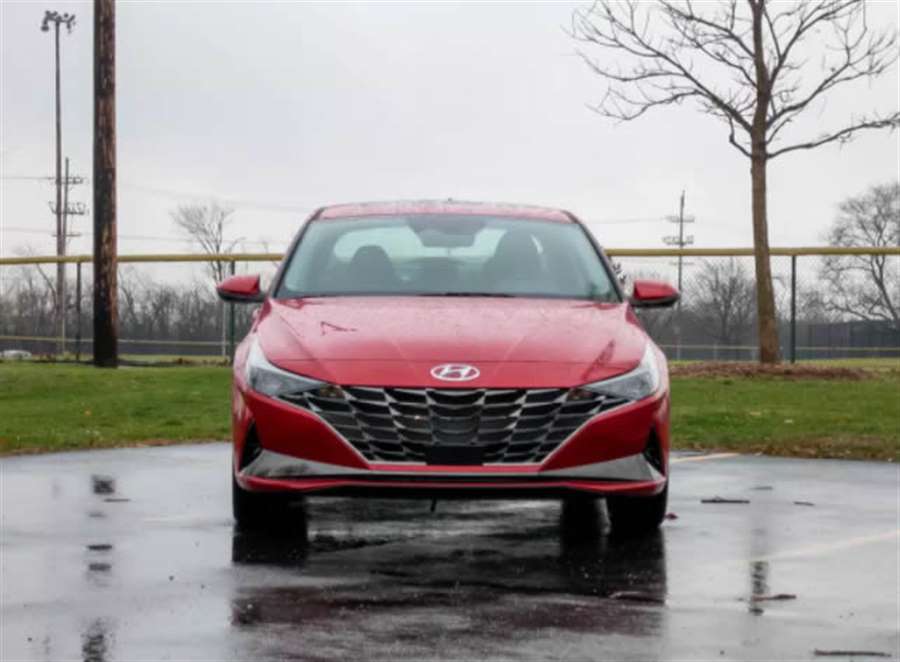
Hyundai’s problem is materials quality. Even in the Limited trim, the upper doors, where your arms and elbows might rest, are all cheap hard plastic, as are most areas your knees touch. Things decline even further in the backseat, where the dollar-store treatment extends to the door armrests. The glove box opens with an undamped clatter; the headliner is mouse fur.
All of that falls in line with the prior-generation Elantra, no standout for cabin materials itself. But if you haven’t been in other compact cars, you’re missing out. The Civic and Impreza have a proper woven headliner. The Sentra offers soft-touch materials where your knees land, and almost all rivals have soft-touch door materials up front, especially in higher trim levels. The Mazda3 keeps it classy front and rear.
There’s potential to right the ship immediately. All major controls feel uniformly meticulous, unlike rivals like the Corolla. All Hyundai would have to do is swap in better materials immediately for a modest cost per car. Of course, the bean counters will multiply that by the hundreds of thousands of cars the automaker hopes to sell. You know how that ends.
Features and Value
As of this writing, the Insurance Institute for Highway Safety has yet to publish crash-test results for the 2021 Elantra, but once the agency does, those results will appear here. Standard safety and driver-assist features include automatic emergency braking with pedestrian detection, a blind spot warning system and lane-centering steering.
The Elantra SE starts just under $21,000 (all prices include destination). That’s roughly competitive with rivals’ base models, most of which have standard automatic transmissions, as well. Standard features include 15-inch alloy wheels, the 8-inch touchscreen with wireless phone integration and the aforementioned safety tech. Finding an SE might be hard, however: As of this writing, just 12% of new 2021 Elantra sedans on Cars.com are SE models, and that’s with the Elantra Hybrid and N Line not yet on sale. Their eventual arrival will consign the SE to an even smaller slice of the pie.
The vast majority of current inventory is the next-up Elantra SEL (about $22,000), which adds larger wheels, dual-zone automatic climate control and keyless access with push-button start. Add options or climb the trim levels, and you can get leather upholstery, a power driver’s seat with memory, heated and ventilated front seats, the larger touchscreen, Bose premium audio, adaptive cruise control and Highway Driving Assist. (HDA augments Hyundai’s standard lane-centering, called Lane Following Assist, with additional capabilities on designated highways. Read more about the differences.)
The N Line runs about $25,000, while the well-equipped Limited (around $26,500) doesn’t have any factory options. The Elantra Hybrid, meanwhile, exacts a $2,650 premium for its SEL and Limited trims versus the same non-hybrid examples. As such, expect an Elantra Hybrid Limited to set you back about $29,000 — likely the highest sticker price most shoppers will see on any Elantra. That’s still a decent value, especially considering Hyundai’s impressive warranty and three years’ free maintenance.
Value might drive many shoppers toward the Elantra, and excellent drivability should justify consideration even among the less budget-conscious. The downfall comes with Hyundai’s lack of investment inside, a peskiness that leaves the Elantra at four-fifths of great.
Source: cars.com
2021 Mazda Mazda6
The 2021 Mazda6’s engaging ride and high-end cabin help it land in the top third of our midsize car rankings.
Is the Mazda6 a Good Car?
Yes, the Mazda6 is a good midsize car. It boasts adept handling, responsive steering, and two peppy four-cylinder engine options. It also has an upscale cabin and comes with an abundance of safety tech and infotainment features, including newly standard Android Auto and Apple CarPlay capability. Rear-seat legroom is slightly cramped, and its infotainment system isn't as user-friendly as those of rivals, but those are this Mazda's only major negatives.
Why You Can Trust Us: 56 Reviews Analyzed
We’ve analyzed 56 Mazda6 reviews, as well as performance specs, interior dimensions, fuel economy ratings, and more, to give you all the information you need to make a smart car-buying decision.
This 2021 Mazda6 review incorporates applicable research for all models in this generation, which launched for 2014.
U.S. News Best Cars has been ranking and reviewing vehicles since 2007, and our staff has more than 75 years of combined experience in the auto industry. To ensure our objectivity, we never accept expensive gifts from carmakers, and an outside firm manages the ads on our site.
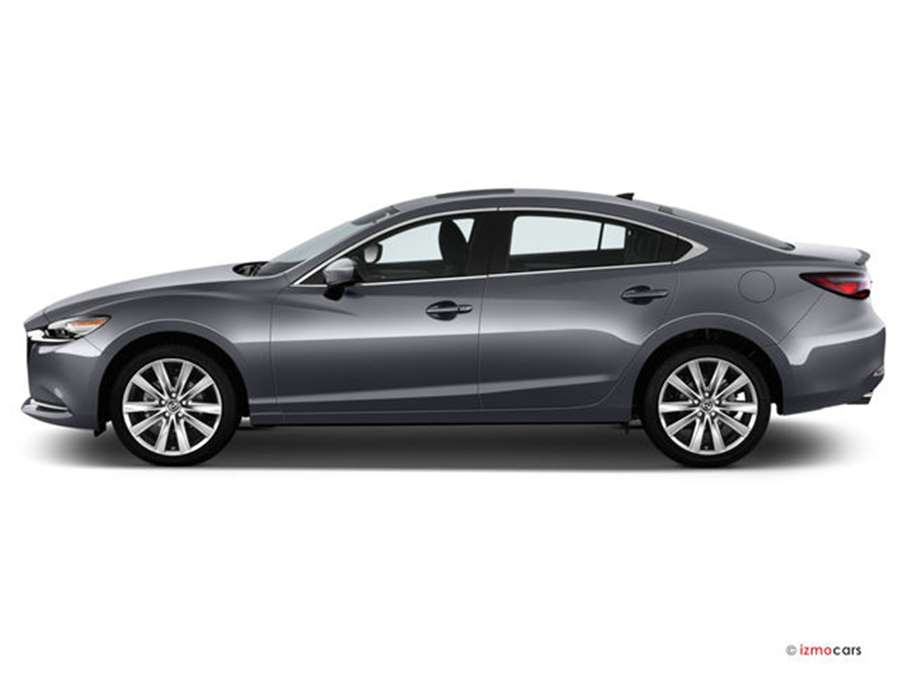
Should I Buy the Mazda6?
If you’re looking for a fun-to-drive midsize car, it’s hard to beat the Mazda6. That said, there are a few other vehicles worth considering before you make your purchase decision. The Toyota Camry is nearly as fun to drive as the Mazda, and it's available with a very strong V6 engine option. The Honda Accord isn't as athletic as the Mazda, but it offers more passenger space and additional cargo room.
2020 vs. 2021 Mazda6: What's the Difference?
For the 2021 model year, the Mazda6 gains standard Android Auto and Apple CarPlay, while wireless Apple CarPlay is newly available. Additionally, Mazda debuts a new Carbon Edition trim.
Here are the key changes for the Mazda6 over the last few years:
2017: upgraded infotainment system; Bluetooth and a rearview camera became standard; blind spot monitoring and rear cross traffic alert became standard in 2017.5 models
2018: refreshed interior styling; gained an available turbocharged engine and available Apple CarPlay and Android Auto
2019: gained some standard safety features; six-speed manual transmission discontinued
2020: no major changes
2021: Apple CarPlay and Android Auto added to standard features list; Carbon Edition trim introduced
If you're considering an older model, be sure to read our 2018 Mazda6, 2019 Mazda6, and 2020 Mazda6 reviews to help make your decision. Also, check out our Best New Car Deals and Best New Car Lease Deals pages to learn about savings and discounts you can find on new vehicles.
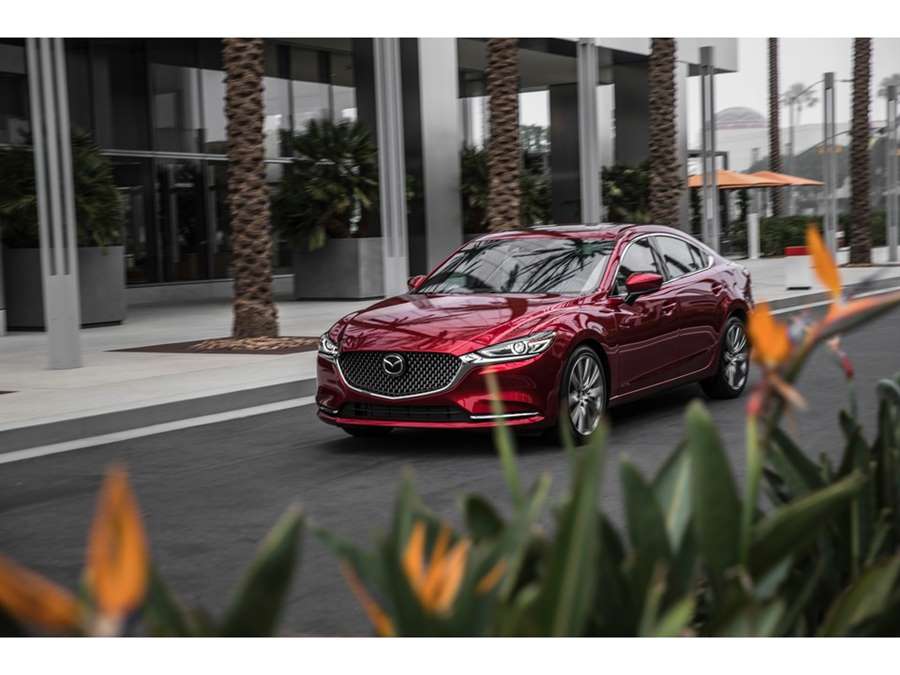
How Much Does the Mazda6 Cost?
The 2021 Mazda6 starts at $24,325, which is roughly average for a midsize car. The top-of-the-line Signature trim has a starting price of $35,750.
Check out our U.S. News Best Price Program for great savings at your local Mazda dealer. You can also find excellent manufacturer incentives on our Mazda deals page.
How Much Does It Cost to Insure a Mazda Mazda6?
The cost of insuring a Mazda Mazda6 will depend on a variety of factors, including your deductible, the level of coverage that you want, and the type of insurance that you choose. Your age, gender, location, credit score, and driving record can also have an impact on your insurance rates. Check out our car insurance guide to find the best policy for you.
Mazda6 vs. Toyota Camry
The Toyota Camry is just as enjoyable to drive as the Mazda6. The Toyota has plenty of power in its base four-cylinder engine, and its optional V6 engine is stronger than any of the Mazda's offerings. Additionally, the Camry has an easier-to-use infotainment system, a more spacious second row, a higher predicted reliability rating, and better gas mileage estimates. The Mazda6 is a good car, but the Camry is even better.
Mazda6 vs. Honda Accord
The Honda Accord and Mazda6 are neck and neck in our midsize car rankings, and choosing between them will come down to personal preference. The Mazda has more athletic handling, but the Honda offers two turbocharged four-cylinder engine options, and it delivers a gentle ride with lively handling. You’ll also get more passenger room and cargo space with the Honda. Ultimately, these are both solid picks; you can't go wrong with either.
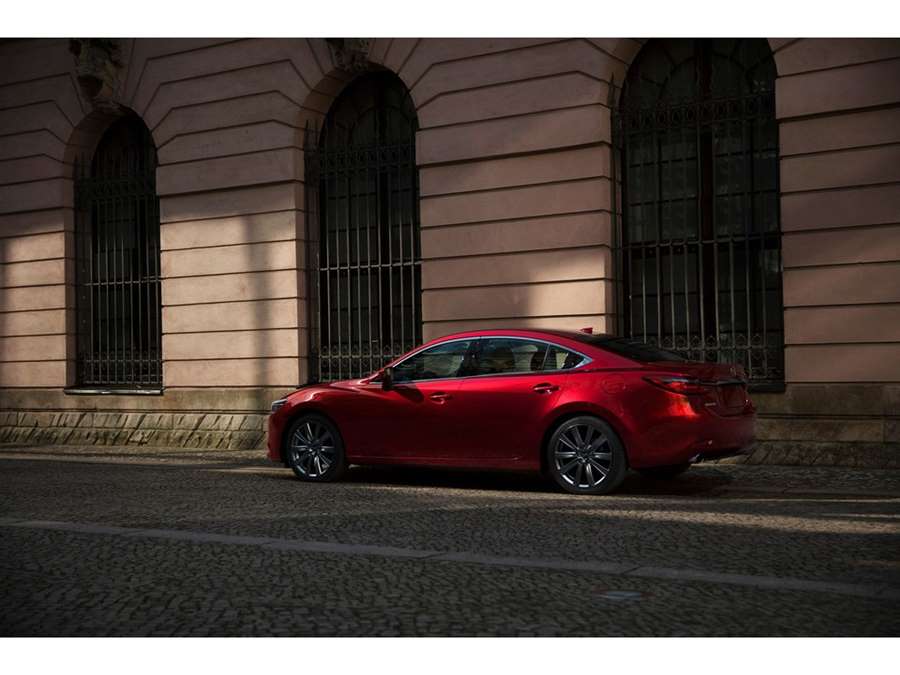
Mazda6 Cargo Space
This Mazda has a 14.7-cubic-foot trunk that provides enough room to store over a dozen grocery bags. The trunk is small for the class, however, and the release handles that fold down the back seats can only be accessed from the trunk. On the plus side, the 6 comes standard with 60/40-split-folding rear seats.
How Many People Does the Mazda6 Seat?
The Mazda6 seats up to five people. The front seats are well contoured, and there's adult-friendly seating throughout the cabin. However, some critics note that the car could benefit from extra rear-seat legroom.
Mazda6 and Child Car Seats
There are two complete sets of LATCH connectors for the rear outboard seats and a tether anchor for the rear middle seat. The middle seat can also borrow lower anchors from the adjoining seats. The Insurance Institute for Highway Safety gave this system the highest rating of Good+, which indicates that it's among the easiest to use.
Mazda6 Interior Quality
This Mazda has one of the nicest cabins in the midsize car class. Some reviewers say its upscale interior materials are close to what you would find in a luxury vehicle. Some optional comfort features include synthetic leather upholstery, genuine leather upholstery, ventilated front seats, and heated front seats.
Mazda6 Infotainment, Bluetooth, and Navigation
The Mazda Connect infotainment system comes standard in the Mazda6. This system features a touch screen, but its lockout feature prevents you from using touch controls while driving. Instead, drivers must use the central control knob when the car is in motion. Most critics praise the control knob as easy to use, but some complain that there are too many menus to wade through to get to certain functions.
Standard infotainment features: an 8-inch touch screen, six speakers, Android Auto, Apple CarPlay, HD Radio, Bluetooth, voice recognition, and two front USB ports
Available infotainment features: rear USB ports, satellite radio, wireless Apple CarPlay, an 11-speaker premium Bose stereo, and navigation
Additional standard features: push-button start, remote keyless entry, and dual-zone automatic climate control
Other available features: proximity keyless entry and a moonroof

Mazda6 Engine
A 187-horsepower 2.5-liter four-cylinder engine is standard in the Mazda6. A turbocharged four-cylinder that produces 227 or 250 horsepower (depending on the grade of gasoline you pump into the tank) comes standard in Grand Touring trims and up. Both engines are paired to a six-speed automatic transmission that delivers smooth shifts. The base engine is powerful and helps the vehicle accelerate quickly, but the upgraded engine offers significantly more pep.
Mazda6 Gas Mileage
The 2021 Mazda6 gets 26 mpg in the city and 35 mpg on the highway in its standard setup, which is about average for the midsize car class. Models with the upgraded engine get an EPA-estimated 23 mpg in the city and 31 mpg on the highway.
Mazda6 Ride and Handling
The Mazda6’s responsive steering and athletic handling help make it a thrill to drive, without sacrificing ride comfort. Front-wheel drive is standard. All-wheel drive is not available.
Is the Mazda6 Reliable?
The 2021 Mazda6 has a predicted reliability rating of three out of five, which is about average.
Mazda6 Warranty
Mazda covers the 2021 Mazda6 with a three-year/36,000-mile basic warranty and a five-year/60,000-mile powertrain warranty.
Mazda6 Crash Test Results
The National Highway Traffic Safety Administration gave the 2021 Mazda6 an overall safety rating of five out of five stars, with five stars in the frontal and side crash tests and four stars in the rollover test.
The Insurance Institute for Highway Safety named the 2021 Mazda6 a Top Safety Pick+, giving it the highest rating of Good in all six crash tests and the second-highest rating of Acceptable for how well its headlights illuminate the road ahead. Models with adaptive headlights earned the highest rating of Good.
The IIHS uses a different scale for grading collision avoidance features. It gave this car the highest rating of Superior for its standard vehicle-to-vehicle front crash prevention system, as well as the second-highest rating of Advanced for its standard vehicle-to-pedestrian system.
Mazda6 Safety Features
Standard advanced safety features:
Automatic high-beam headlights
Rain-sensing windshield wipers
Lane departure warning
Lane keep assist
Forward collision warning
Forward automatic emergency braking
Pedestrian detection
Adaptive cruise control
Blind spot monitoring
Rear cross traffic alert
Rearview camera
Available advanced safety features:
Head-up display
Front and rear parking sensors
Reverse automatic emergency braking
360-degree parking camera system
Traffic sign recognition
Driver attention alert
Adaptive headlights
Mazda6 Dimensions and Weight
The Mazda6 is about 16 feet long. Its curb weight ranges from 3,437 to 3,582 pounds, and its gross vehicle weight rating is between 4,473 and 4,552 pounds.
Where Is the 2021 Mazda6 Built?
Mazda builds the 2021 Mazda6 in Japan.
Which Mazda6 Model Is Right for Me?
The 2021 Mazda6 comes in six trims: Sport, Touring, Grand Touring, Grand Touring Reserve, Carbon Edition, and Signature. The base Sport trim is filled with infotainment, safety, and comfort features, which make it a great pick for most shoppers. The Sport and Touring trims come with the base four-cylinder engine, while every other trim gets the upgraded turbocharged engine.
Mazda6 Sport
The Sport trim (MSRP: $24,325) comes with an 8-inch touch screen, six speakers, Android Auto, Apple CarPlay, HD Radio, Bluetooth, voice recognition, and two front USB ports. Other standard features include push-button start, remote keyless entry, dual-zone automatic climate control, a leather-wrapped steering wheel and shift knob, cloth upholstery, and six-way manually adjustable front seats.
A host of active safety features are also standard, including lane departure warning, lane keep assist, forward collision warning, forward automatic emergency braking, pedestrian detection, adaptive cruise control, blind spot monitoring, rear cross traffic alert, automatic high-beam headlights, rain-sensing windshield wipers, and a rearview camera.
Mazda6 Touring
Starting at $26,925, the Touring trim gains rear USB ports, synthetic leather upholstery, heated front seats, a six-way power-adjustable driver's seat, proximity keyless entry, and a moonroof.
Mazda6 Grand Touring
The Grand Touring trim starts at $30,025. In addition to the turbocharged engine, the Grand Touring adds satellite radio, and an 11-speaker premium Bose stereo.
Mazda6 Grand Touring Reserve
The Grand Touring Reserve trim starts at $32,525 and gains wireless Apple CarPlay, adaptive headlights, genuine leather upholstery, ventilated front seats, an eight-way power-adjustable driver's seat, a six-way power-adjustable passenger seat, a heated steering wheel, and a head-up display.
Mazda6 Carbon Edition
The Carbon Edition trim (MSRP: $32,800) adds red leather upholstery, red and black interior accents, and gloss black exterior accents.
Mazda6 Signature
The top-of-the-line Signature trim has a starting price of $35,750. It gains ambient lighting, Nappa leather upholstery, navigation, traffic sign recognition, a 360-degree parking camera system, front and rear parking sensors, and driver attention alert.
Source: cars.usnews.com
Sales of the BMW Group in 2020
The BMW Group also published sales data during 2020. The data show that the placement of the BMW, MINI and Rolls-Royce brands last year amounted to 2,324,809 vehicles, which is a decrease of 8.4 percent compared to 2019.
BMW itself sold 2,028,659 cars (minus 7.2 percent), MINI ended the year with sales of 292,394 vehicles (minus 15.8 percent), and Rolls-Royce sold 3,756 luxury cars with sales down 26 , 4 percent).
In terms of sales by region, the BMW Group sold 912,621 vehicles (minus 15.7 percent) in Europe, 984,515 (plus 6.1 percent) in Asia, and 306,870 vehicles (minus 18.0 percent) in the United States. In Asia, the largest sales were, of course, in China, where the BMW Group found 777,379 customers (sales growth was 7.4 percent).
The statement also points out that the BMW M sold 144,218 cars in 2020 (plus 5.9 percent compared to 2019), and that sales of electric and plug-in hybrid models (BMW i, BMW iPerformance and MINI Electric) amounted to 192,646 units (plus 31.8 percent).
Finally, the fact that BMW Motorrad sold 169,272 motorcycles last year (minus 3.4 percent).
Autoblog.rs
Mercedes-Benz E-Class Wild E V12 Engine From Brabus
Anyone who’s ever experienced a Mercedes turbo V12 knows they are immensely powerful machines. Direct from Mercedes, they’ll pin your kidneys to your spine with every press of the throttle. But if ‘a lot’ is not enough, Brabus tunes them to absurd power levels. But Mercedes only offered the V12s in a select number of cars.
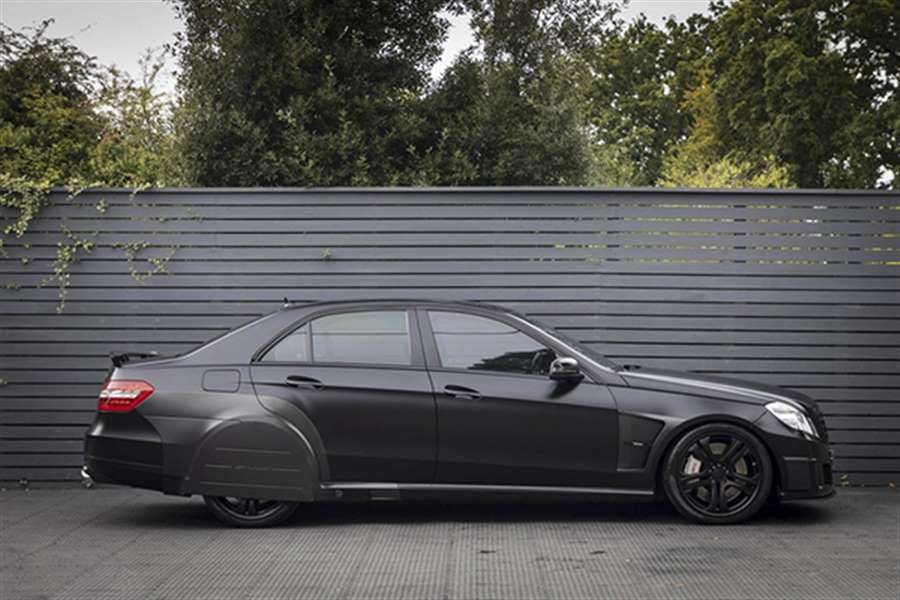
Brabus solved that problem by somehow finding room for the V12 in a W212 E-class. They call it the E V12, and it’s even more powerful than a standard AMG V12. You didn’t ask for 788 horsepower in your E-class, but here you go anyway. Want tires to last 20 minutes? You’ll be able to accomplish that with 1,047 lb/ft of torque. We found this one on ClassicDriver, and it’s quite a departure from a standard E63 AMG.
Starting with a 6.3 liter V12, Brabus worked their magic to create those power numbers. But we feel more magic had to be done in order to get the thing to even fit inside a W212 chassis. It’s already a tight fit in the bigger S class, and long-hooded SL roadsters.
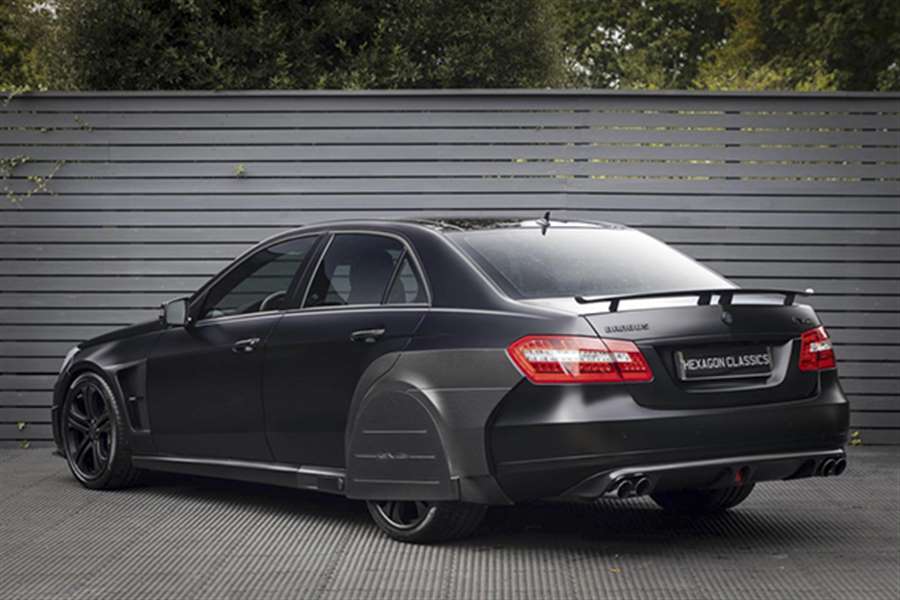
Keen eyed observers will see the front radiator support has been ditched in order to accomodate the V12’s front accessory drive system. By that alone, we can only assume the extensive work to cut up a car, and yet make it stronger than before to handle the loads of a big V12.
Inside the car, just about every surface has been changed to high qualify leather, Alcantara or carbon fiber. A special wrapped steering wheel contains Brabus badging, along with carbon fiber. Badges can also be found on the seatbacksm, and a special “one of ten” EV12 badge lets you know how special the car is.
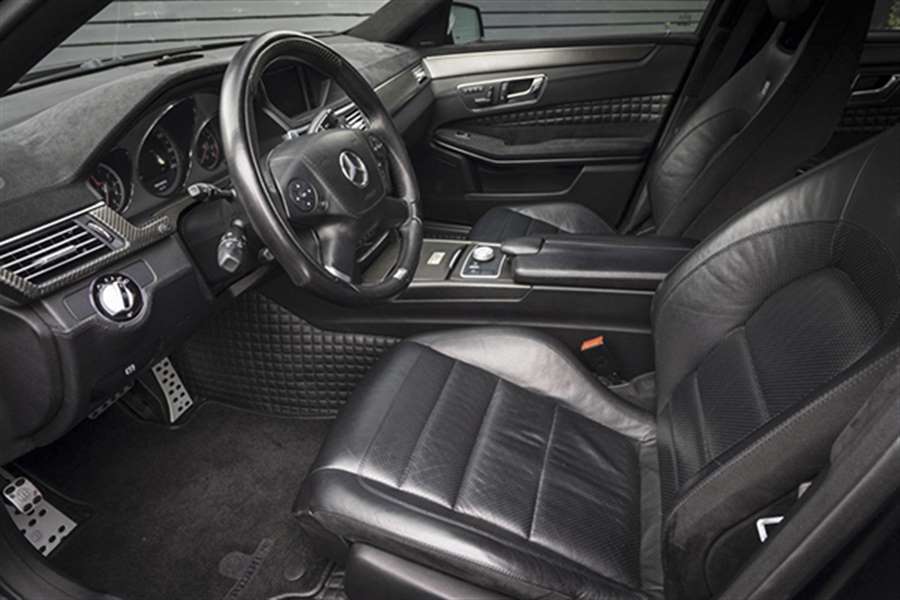
Did you think we weren’t going to mention the body kit? Think again. While Brabus has typically come up with some great looking subtle modifications, the side skirts on the rear wheels will definitely be a love/hate kind of look. But, apparently they do serve a function. Wind tunnel tested, they reduce lift at front and rear, which is a good thing when you’re travelling on the sharp side of 200 miles per hour. Read more > https://mercedes-world.com/e-class/mercedes-benz-e-class-v12-brabus
Source: mercedes-world.com
2020 Porsche 718 Boxster T Handles It All
Porsche's special-edition Boxster bundles corner-carving goodies but doesn't forget about the commute.
Sports cars don't ride this well. After a few miles, disbelief turns to awe. You see, this Porsche Boxster T is aimed directly at the lunatic fringe of car buyers who crave the sportiest handling in a base Boxster. We had a short drive of a European-spec Boxster T in 2019, but we've now spent a few days surfing the potholes and shattered asphalt of our home turf in the United States version. And an apex-slaying suspension just isn't supposed to be this livable.
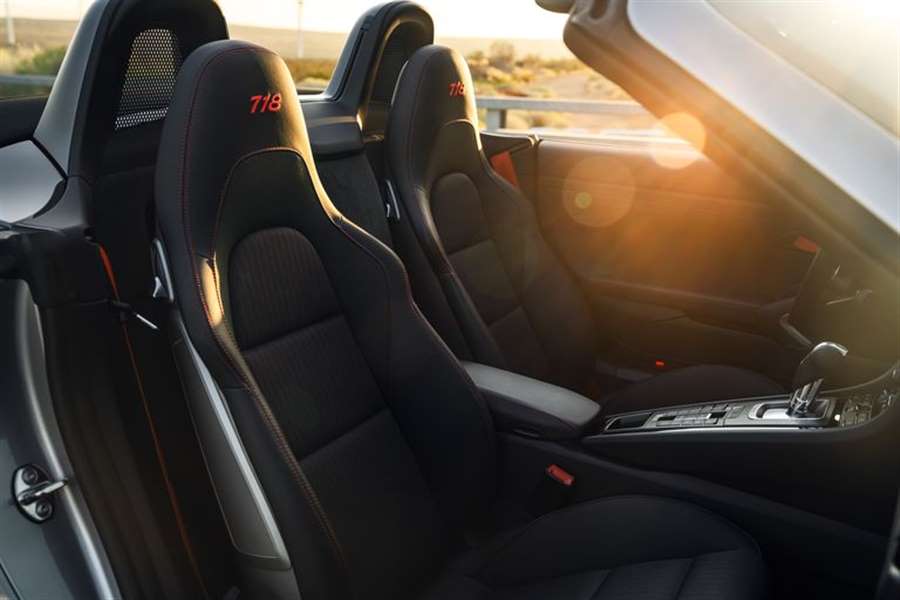
Porsche makes all of the Boxster's chassis goodies standard in the T and then sprinkles some Ferry dust on the whole thing. The suppleness is surprising considering the T model is equipped with a sport suspension that drops the Boxster nearly an inch (20 mm) and includes 20-inch wheels with tires whose sidewalls appear to offer all the impact protection of a leather helmet. And yet, the Boxster T's ride compliance betters that of many sports sedans. No crash, no smash, no harshness.
Vital to the ride quality are the sport package's standard adaptive dampers—PASM in Porsche language—that adeptly smooths those high-frequency jolts that tend to discombobulate performance cars. A button next to the shifter allows the driver to tighten up the dampers' responses, but there's no real reason to take them out of Normal mode since they continuously adapt to how hard you're driving and whatever bad breaks the road throws at them. But, if you want to ruin the ride, go right ahead and select Sport.
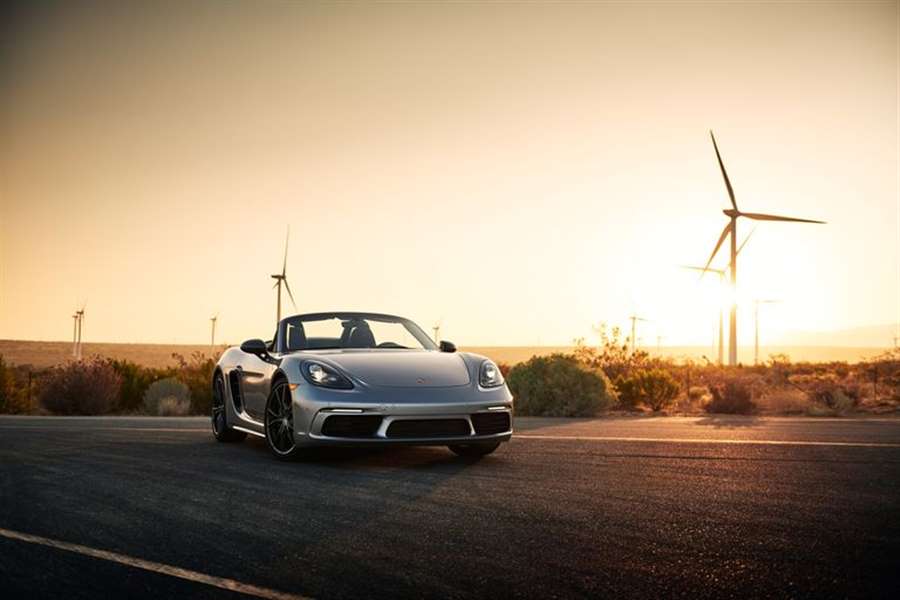
If that over-the-road grace is surprising, the Boxster T's handling isn't. Like a regular Boxster or Boxster S, the T's moves and primary controls foster a close connection that shrinks the car around you. In addition to the sport suspension and 20-inch wheels, the T model makes a few other optional bits standard fare. Every Boxster T comes with brake-based torque vectoring that helps rotate the car into corners and active engine mounts that stiffen or soften to help keep engine motions from upsetting the handling.
A small-diameter sport steering wheel with a drive-mode selector knob is also standard. As precise as the atomic clock, the steering sends all the right signals from the tires and road without any kick or ugliness.
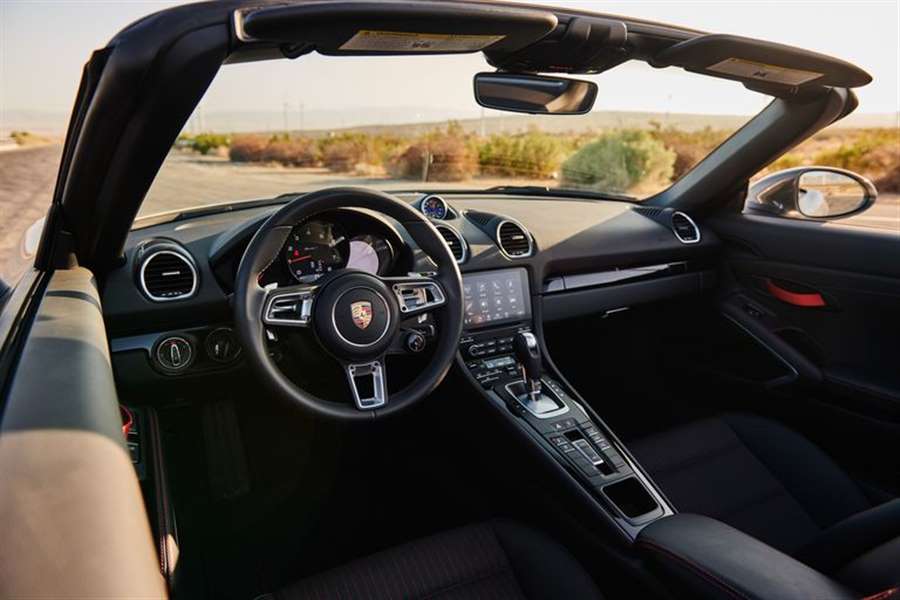
What the T doesn't add is more power. Bolted in behind the driver is the same 300-hp 2.0-liter flat-four that has powered the base Boxster since 2017. The 2.0-liter pulls hard from low rpm once the turbo lights things up, and the engine delivers more than enough acceleration to dispel your regrets over foregoing the 350-hp Boxster S. The flat-four issues a guttural grumble, especially at idle, but the sound improves when zinged to the 7500-rpm redline. The engine will never be confused with a BMW inline-six—or even Porsche's flat-sixes—but tries to compensate for its inability to carry a tune with an angry exhaust note.
Coupled with the optional seven-speed dual-clutch automatic transmission ($3730), we expect the Boxster T to get to 60 mph in 3.8 seconds, the same time as a mechanically identical PDK Boxster we tested back in 2017. All automatic T models will be able to repeat that performance as many times as you please, since they come standard with the Sport Chrono Package that adds the all-important launch-control function. Left foot on the brake pedal, floor the accelerator, release the brakes, and there you have it: the perfect launch, easy enough to merit an infomercial.
Still, we'd skip the dual-clutch automatic in favor of the six-speed manual. Not only is it's less expensive, but it's more in keeping with the driving-joy ethos of the T. In our testing of the non-T Boxster manual, the DIY gearbox runs to 60 mph in 4.3 seconds. Plenty quick.
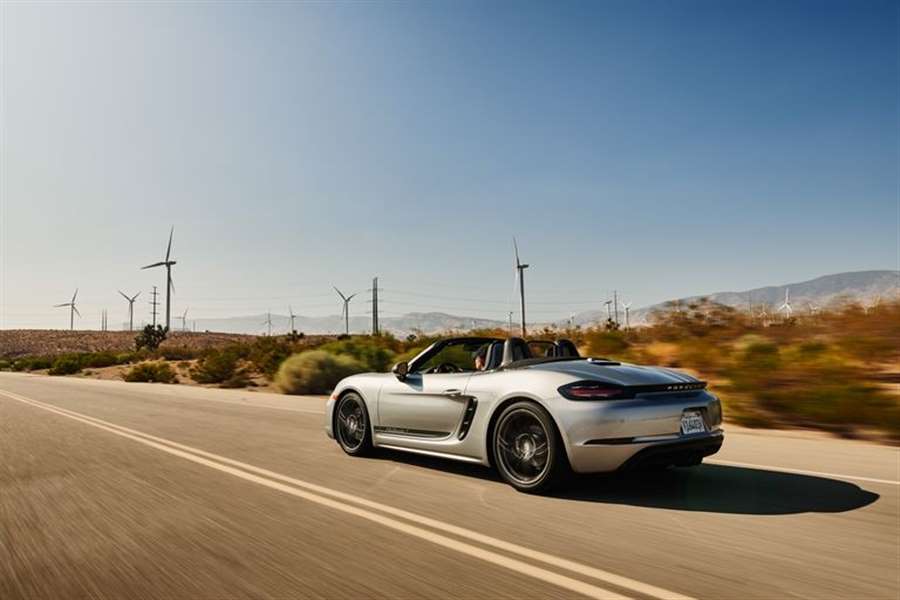
Some Boxster buyers might wonder about the T's cloth and leather seats. Porsche's puritanical models of the past—the 1988 911 Club Sport, the 1992 911 RS America, and the 1993 911 Speedster—came with pinstriped cloth upholstery, and the T's cloth seats speak to its mission statement. Cloth is grippier than leather, so the thinking is that since you love corners enough to buy this car, you'll want the cloth holding your butt in place. Fabric door pulls replace door handles, another nod to Porsche's racing heritage and the GT models. Our test car wore the T Interior Package ($2770) that adds contrasting stitching throughout and a few bits of trim. At $2770, the option seems expensive for the minor dress-up.
The Boxster T starts at $69,850, or $8900 more than the base Boxster. With one exception, it's possible to add the T's many chassis options to a base Boxster, and the price works out to be about the same as the T. What you miss out on are the T's even lower Sport suspension (a 0.8-inch drop versus 0.4 inch) and its heritage-inspired cloth interior and door pulls. And, while you can build a Boxster to mimic most of the T's goodies, it's unlikely you'd ever find one on a dealer lot. By bundling these options in a new model, dealers can easily order an enthusiast special, and enthusiasts can skip the special order from Stuttgart. The T makes a handling-optimized Boxster easy to find, and its ride makes it easy to drive every day.
Source: caranddriver.com

